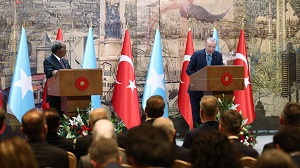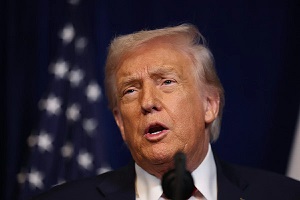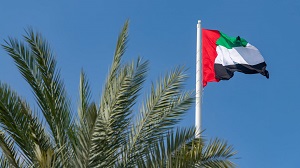Lebanon as a Permanent Border Problem - By Hazem Saghieh, Asharq Al-Awsat
In Lebanon, border issues do not stop at the borders. They are at the heart of the country’s internal policies, but also the heart of its residents’ sentiments and feelings.
This situation applies generally to countries in which these three qualities are found: recent establishment, internal strife and widespread anxiety about an unstable region. Lebanon is an archetypical model in which all three of these qualities are present. Thus, its positions on border affairs determine internal policies more than its internal affairs shape positions on borders.
Traditionally, some Lebanese groups have been known for fearing everything that comes from outside their borders, thereby linking the “army’s valor” with defending them. In contrast, other groups were known for being content with everything that came from the outside, until “eradicating the borders of Sykes-Picot” became a criterion for “heroism”. The former groups’ hearts beat for those who are far from their borders, seeking their help during crises and their arrival from across the seas and oceans to provide salvation. The second group fears these distant strangers to the “region” whose unity should not be undermined by borders.
Between the view that borders are fortresses that protect and the other that they are obstacles that hinder, interpretations proliferate and disputes intensify. Some say that the borders were instilled to mirror the ongoing differences among groups, while others see them as having created these differences and provided exacerbated them. In all likelihood, the truth lies somewhere between these two views, which are made more contentious by the fact that some read them as innocent texts while others read them according to intentions that lie between the lines.
Moreover, the national being of Lebanon has been linked, closely, to its borders. This happened in the very beginning, i.e. with the annexation of the “Four Kazas” (Rashaya, Hasbaya, Baalbek and Al-Muallaqa) to “Greater Lebanon” in 1920, and the controversy and tension that accompanied it. This border, though the names and addresses differ, nevertheless explains much of what is happening today between Lebanon and both Syria and Israel, whereby the former’s professed ideology explicitly calls for “eradicating the borders”, while the latter’s professed ideology refrains from defining the borders.
It also explains the existence of the two interrelated Lebanese problems at hand over both land and sea, i.e. the demarcation of the borders with each of these two difficult countries. Syria’s Foreign Minister Walid al-Muallem recently reiterated his rejection of this demarcation “because Lebanon is not an adversarial country”, knowing that he does not accept that the Lebanese demark their borders with Israel because the latter is the ultimate “adversarial country”.
Going further: some consider Lebanon itself to be a border that goes beyond the geographic space that the country occupies. It has long been described as a border between East and West, becoming a bridge in times of amity, and erupting like an earthquake in times of anger. This equation yielded a success that ran for nearly two decades and a semi-success which lasted for a few years.
With regard to Israel, the 1949 armistice agreed in Rhodes was accompanied by an economic boycott of the Jewish state. Thus, the southern border was settled and calmed down, while the port of Beirut avoided competition with the port of Haifa, and peace, stability and prosperity lasted nearly two decades.
Concerning Syria, while it had been part of the “United Arab Republic,” the famous tent meeting between Gamal Abdel Nasser and Fouad Chehab provided internal stability, but it did not come cheap: handing the country’s foreign policy decisions over to Cairo and ensuring the demise of those who opposed Nasserism (including Camille Chamoun and Raymond Edde) in the parliamentary elections. After 1967, Syria transformed itself into a source of fighters who declared their intention to liberate Palestine from Lebanon.
Since then, “civilizations” decided that they would not “cross-breed” and “dialogue”, Lebanon is no longer a bridge. Gradually, with some zig zagging, it became a seismic zone: it is the border between Syria and Israel. Perhaps the astuteness attributed to Hafez al-Assad stems precisely from this: that he reinvented Lebanon and turned it into a border that prevents direct confrontation with the “Zionist enemy”, and he treated those borders with a “brotherhood” that changed the meaning of the word.
Lebanon is the Iranian-Israeli border as well, a duty that Hezbollah has volunteered to up since its inception nearly four decades ago. It is doubtful that the recent frightening developments, the explosions at the Iranian Natanz reactor after the explosion of the military complex in Parchin, will lead to a termination of this volunteering role.
Above all else, we are living under the weight of two borders’ dimensions. First, the famous Shebaa Farms, the space of which does not exceed 40 square kilometers were brought back to our memory from the declaration of Ehud Barak, then Prime Minister of Israel, of his intention to withdraw, unilaterally, from Lebanon. Israel took this area, in 1967, from Syria, not from Lebanon. Today, it is demanded that Lebanon liberate it without Syria having acknowledged that it is Lebanese!
The other dimension is the crossings that are to remain open, and the Zabadani crossing, which Hezbollah controls, has recently been added to it from the Syrian side. The financial losses incurred because of these crossings are nonetheless a detail compared to their supposedly existential significance. We are promised war from the east and south, and those who do not fight us will be called upon to do so that we may liberate borders, to keep open the shop that is going under in every sense but, nevertheless, is not allowed to close.
Latest News
-
 Turkey calls 'Israel's' recognition of Somaliland 'illegitimate'
Turkey calls 'Israel's' recognition of Somaliland 'illegitimate'
-
 Trump warns Hamas, Iran after Netanyahu talks
Trump warns Hamas, Iran after Netanyahu talks
-
 UAE denies Saudi accusation of fuelling Yemen conflict
UAE denies Saudi accusation of fuelling Yemen conflict
-
 Syria reveals new post-Assad banknotes
Syria reveals new post-Assad banknotes
-
 Hamas Armed Wing Refuses to Surrender Weapons, Confirms Spokesman Killed by Israel in August
Hamas Armed Wing Refuses to Surrender Weapons, Confirms Spokesman Killed by Israel in August